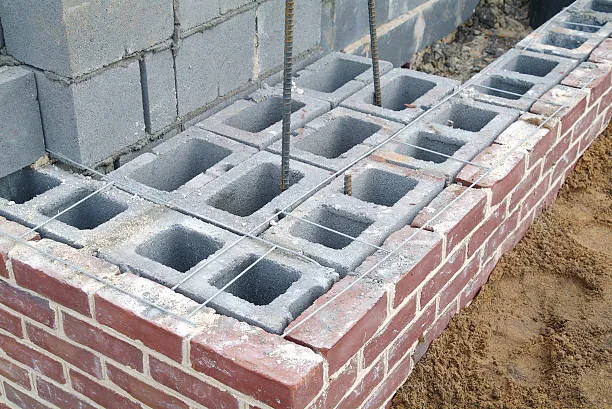What You Should Know About Raft Foundations
Raft foundations are popular foundation system. Mat foundation is another name for raft foundation. The next sections include the definition of raft foundation, as well as the working principle, when to use a raft, kinds of raft foundation, raft foundation materials, and raft building processes.
When to Use a Raft Foundation, Types of Raft Foundations, and How to Build a Raft Foundation
What is the Raft Foundation, and what does it do?
Raft foundations are made consisting of a thick concrete slab sitting on a wide area of soil that is reinforced with steel and serves to support columns or walls while transferring loads from the building to the earth. Mat foundation is often distributed throughout the whole surface of the structure it supports.
Raft foundations are commonly used to support structures such as residential or commercial buildings in poor soil conditions, storage tanks, silos, and large industrial equipment foundations, among other things.
The Working Principles of the Raft Foundation
It’s vital to understand how raft foundation works in order to obtain a better understanding of when to utilize it. Let’s have a look at the basics of how it works.
The complete load from the building is transmitted to the full ground floor area through a raft foundation. The raft foundation’s stress distribution method is relatively basic. The stress on the soil is determined by dividing the entire weight of the structure and the self-weight of the mat by the total area of the foundation it is covering.
Because the contact area of a raft foundation with the soil is significantly greater than that of any other form of foundation, the load is dispersed over a broader area, resulting in less stress on the soil and a lower risk of shear failure.
When Should You Use Raft Foundation?
Choosing the correct type of foundation is one of the most essential parts of foundation design. When the earth has a limited bearing capability, a raft foundation is suggested.
The structure’s load must be spread out across a broad region.
Individual foundation areas, or any other foundation area, would cover roughly half of the entire ground surface beneath the structure.
Individual footings might overlap if the columns or walls were positioned too close together.
It is necessary to decrease soil stress.
If individual footing is utilized, there is a chance of differential settlement.
When soil layers are unpredictably variable and contain compressible soil pockets.
The basement will be built.
Any other sort of footing is unsuitable for usage.
Types of Raft Foundation
Depending on the soil condition and the weight exerted on the foundation, several types of Raft foundations can be utilized.
The many types of raft foundations utilized in the building are as follows:
Below is a quick rundown of the many varieties of mat foundations.
1. Plate Mat (flat)
The most basic type of raft foundation is this. When the columns and walls are regularly placed at small intervals and the applied loads are relatively minor, this sort of mat is employed.
More reinforcement is necessary at the column sites and load-bearing walls, and reinforcement is put in both directions. For budgetary reasons, the thickness of this sort of raft foundation is usually limited to 300mm. It would not be cost-effective to use a thicker slab.
2. Thickened Plate Under Columns
When the columns and load-bearing walls are subjected to higher loads, the slab is thickened beneath them, and more reinforcement is added to prevent diagonal shear and negative reinforcement.
3. Beam and Slab in Two Directions
Beams are cast monolithically in this form of the raft, with the raft slab joining the columns and walls. When the columns are positioned at a greater distance apart and the weights on the columns are varied, this form of the raft is appropriate.
4. Plates with Pedestals
A pedestal is installed at the base of the columns in this style of mat. This sort of foundation serves the same purpose as a thicker flat plate beneath columns.
5. A piled-up raft
The piles support this sort of raft foundation. When the soil at a short depth is very compressible and the water table is high, a stacked raft is employed. Piles beneath the raft aid in minimizing settling and providing buoyancy resistance.
6. Cellular Raft Foundation/Rigid Frame Mat
The foundation walls function as a deep beam in this sort of raft. When the connecting beams reach 90cm in depth and the columns support exceptionally large loads, a rigid frame mat is used.
A cellular raft foundation is formed by stacking two concrete slabs on top of each other and connecting them with foundation walls in both directions. When the needed slab thickness is quite high, this form of the raft is exceptionally rigid and cheap.
Construction Materials for Raft Foundations
The following are some of the building materials used in the construction of a raft foundation:
Formwork
Reinforcement
Concrete.
Spacer
Raft Foundation Construction Process
The following are the main processes in constructing a raft foundation.
Determine the depth at which the foundation will be applied.
Excavate the dirt to the depth necessary.
The dirt should be compacted.
A waterproofing membrane should be used.
Apply a 3” layer of planar cement-and-sand paste.
Place reinforcement using spacers to maintain the appropriate distance.
Pour concrete until it reaches the required depth.
Curing.
Read Also: Easy Guide to Building a Low-Cost House in Nigeria
Conclusion
To summarize, the mat is one of the most frequent and popular types of foundation system owing to its ease of installation and efficacy in poor soil conditions at a shallow depth.
For the best use of the foundation, one must examine the soil condition and assess the loading condition of the structure, as well as take the required steps for safe construction.


![Top 10 Construction Companies in Lagos ([year]) Construction Companies in Lagos](https://eucarlrealty.com/wp-content/uploads/2022/11/Construction-Companies-in-Lagos.jpg)